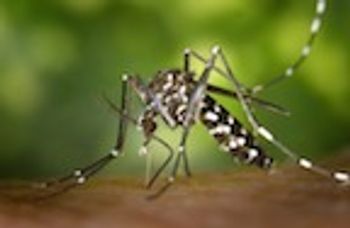
The latest on diagnosing and managing a chronic, painful and potentially debilitating condition that affects an estimated 25% of your canine veterinary patients.
Dr. Pendergrass received her DVM degree from the Virginia-Maryland College of Veterinary Medicine. Following veterinary school, she completed a postdoctoral fellowship at Emory Universitys Yerkes National Primate Research Center. Dr. Pendergrass is the founder and owner ofJPen Communications, a medical communications company.

The latest on diagnosing and managing a chronic, painful and potentially debilitating condition that affects an estimated 25% of your canine veterinary patients.

Todays veterinarians have choices in vaccine formulations beyond the standard killed or modified-live formulations. But more options can also make for more confusion.

Trap-Neuter-Return programs for unowned cats may fail because local community members arent involved. Social efforts need to join medical efforts, say these UK researchers.

They're rare, unusual and prognosis is often dismal. But in the event you encounter one of these difficult dermatologic cases, you'll want to be prepared. Heres the latest on potentially fatal skin diseases in small animals.

Researchers examine effectiveness of visual assessment in screening for periodontal disease.

Check out these fast fixes for behavioral problems in small animals.

Learn the facts about cannabis for pets so you’re prepared to educate your clients.

Clinical examination and behavioral observation during travel may identify horses at increased risk for transportassociated respiratory disease.

Developing a weight loss plan for feline patients involves owner education regarding a balanced diet, calorie reduction, portion control, and increased physical activity.

Growing antibiotic resistance has complicated the treatment of bacterial skin conditions. Here’s what to consider when making therapeutic decisions for your patients.

Feline idiopathic ulcerative dermatitis may be a behavioral disease associated with poor welfare, researchers say, prompting a name change to “feline behavioral ulcerative dermatitis.”

Animal-assisted therapy provides measurable benefits for children with cancer and their caregivers.

Dogs with leishmaniasis are at risk for co-infection with Ehrlichia canis, prompting new recommendations for diagnosing and monitoring canine leishmaniasis.

How do health, overall management, and the microbiota affect the function of a working dog’s nose?

The gut microbiota of the Anopheles mosquito has several mechanisms for reducing infection by Plasmodium, suggesting new approaches for reducing malaria transmission.

A new study finds that this regenerative therapy has beneficial, albeit short-lived, effects in dogs with cranial cruciate ligament injuries.

For children with autism spectrum disorder, having a loving and affectionate pet cat can provide social and emotional benefits.

In the first study of its kind, researchers examined the connection between idiopathic epilepsy and cognitive dysfunction in dogs.

Results of a recent study suggest that dogs may be useful in identifying potential biomarkers for lung cancer in people.

A new study challenges the belief that polysynovitis and uveitis are immune-mediated processes in foals infected with Rhodococcus equi.

What is known about feline mesenchymal stem cell biology and immunology? We highlight studies that evaluated the cells’ therapeutic potential in cats.

A recent study asked the question: Does having parvovirus infection as a puppy have a negative health impact later in a dog’s life?

HIV-1 treatment is frequently stymied by drug resistance, but a recent study of feline immunodeficiency virus could provide clues for overcoming this resistance.

A recent study provided new insight into how dogs process and respond to nonverbal vocalizations of human emotion.

Seroprevalence of Neospora caninum is low in German female breeding dogs, a population in which N caninum seroprevalence had not been investigated previously.

Is it diagnostically useful to heat-treat serum samples when testing for the presence of heartworm antigen? A recent study sought to answer that question.

How does living environment affect allergy development? A recent study sought to find out.

The endocannabinoid system in dogs becomes more active during CNS inflammation, suggesting the system’s potential role as a therapeutic target.

Can a dog owner’s personality and mental health status be linked to behavior problems in his or her pet?

Play behaviors in dogs serve important functions and can indicate positive or negative welfare.

Published: October 24th 2017 | Updated:

Published: October 31st 2017 | Updated:

Published: October 31st 2017 | Updated:

Published: November 1st 2017 | Updated:

Published: November 10th 2017 | Updated:

Published: November 11th 2017 | Updated: